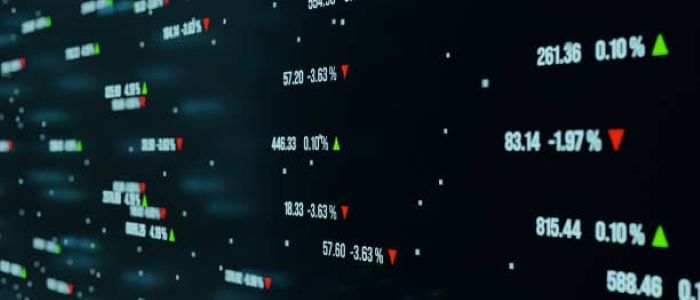Being thrown into a vast ocean with no life jacket. The waves of volatility, the currents of trends, and the storms of market sentiment can be overwhelming. But fear not, for in this vast ocean of markets, there are seasoned sailors who have mastered the art of navigation. These are the pro traders, and their secret weapon is technical analysis.
Technical analysis is the study of historical price patterns in markets to predict future price movements. It’s a discipline that has been honed over centuries, and it’s a language that every trader, from the novice to the pro, must learn to speak fluently. So, let’s embark on a journey through the technical analysis of markets, a guide for those who aspire to become pro traders in the global markets.
The Art of Reading Price Charts
Price charts are the canvases on which traders paint their predictions. Each candlestick, each line, and each bar represents a story of supply and demand, of fear and greed. Understanding how to read these charts is the first step in the technical analysis of markets. The global markets are a playground for price action, and the more you understand the language of these charts, the better you can anticipate the movements of stocks, currencies, and commodities.
Candlestick Patterns: A Visual Language
Candlestick patterns are a visual representation of market sentiment over a specific period. They provide a quick snapshot of the battle between bulls and bears. In the global markets (In Arabic, it is called “الاسواق العالمية“), these patterns can be found in any asset class, from stocks to forex. Recognizing these patterns can give you a significant edge in predicting price movements. For instance, a ‘bullish engulfing’ pattern signals a potential uptrend, while a ‘bearish engulfing’ pattern suggests a downtrend.
Trend Lines and Channels
Trend lines are one of the simplest yet most powerful tools in technical analysis. They help identify the direction of the market. A simple upward trend line indicates a bullish market, while a downward trend line points to a bear market. Trend channels, on the other hand, provide a range within which the price of an asset is expected to move. These channels can be used to set entry and exit points for trades, making them an essential part of any trader’s toolkit in the global markets.
Moving Averages: Smoothing the Noise
Moving averages are used to smooth out price data and highlight trends by filtering out the ‘noise’ from random price fluctuations. They are calculated by taking the average of a security’s price over a certain number of time periods. In the markets, moving averages can be a trader’s best friend, providing a clear picture of the trend direction and helping to confirm or refute a trade idea. The global markets are filled with noise, but moving averages help traders cut through the chaos and focus on what truly matters.
Support and Resistance Levels
Support and resistance levels are price points at which an asset’s price tends to stop and reverse. A support level is where buying demand is strong enough to prevent the price from falling further, while a resistance level is where selling pressure is strong enough to prevent the price from rising further. Identifying these levels is crucial in the technical analysis of markets because they can signal potential turning points in the market. In the global markets, these levels can act as psychological barriers that, once broken, can lead to significant price movements.
Volume Analysis: The Fuel of Price Movements
Volume is the fuel that drives price movements. It confirms or refutes the price action, providing a measure of the strength behind a move. In the markets, a price increase on high volume is considered more significant than one on low volume. Volume analysis is a critical component of technical analysis because it can reveal whether a trend has the momentum to continue or if it’s running out of steam. In the global markets, volume can be a telltale sign of market sentiment and the potential for a trend’s continuation or reversal.
Fibonacci Retracement and Extension Levels
The Fibonacci sequence is a series of numbers in which each number is the sum of the two preceding ones. In the markets, Fibonacci retracement and extension levels are used to identify potential support and resistance levels, as well as potential price targets for trades. These levels are derived from the Fibonacci sequence and are believed to correspond to significant price retracements. In the global markets, Fibonacci levels can be a powerful tool for traders looking to identify key areas where price may pause or reverse.
Technical Indicators: The Toolbox of a Pro Trader
Technical indicators are mathematical calculations based on an asset’s price, volume, or open interest. They are used to analyze market data and identify trading opportunities. Some of the most popular indicators include the Relative Strength Index (RSI), Moving Average Convergence Divergence (MACD), and Bollinger Bands. These indicators can provide additional insights into market trends and potential price movements, making them an indispensable part of a pro trader’s toolkit in the markets.
Trading Strategies and Risk Management
While technical analysis provides the tools to predict market movements, it’s the trading strategies and risk management that turn predictions into profits. A well-crafted trading strategy combines technical analysis with a clear understanding of risk and reward. In the markets, every trade should have a defined entry point, exit point, and stop-loss level. Risk management is about protecting your capital and ensuring that your losses are limited while your profits have the potential to run. In the global markets, risk management is not just a strategy; it’s a survival skill.
The Emotional Side of Trading
Trading is as much a psychological game as it is a technical one. The markets (In Arabic, it is called “ماركت كوم“) can be a battleground for emotions, with fear and greed often dictating trading decisions. A pro trader understands the importance of maintaining emotional discipline and sticking to their trading plan. In the global markets, emotions can run high, but it’s the traders who remain calm and focused who are most likely to succeed.
The Power of Discipline and Consistency
Discipline and consistency are the hallmarks of a pro trader. They follow their trading plan religiously, entering and exiting trades based on predefined criteria. In the markets, there will always be outliers and unexpected events, but a disciplined trader doesn’t let these sway them from their strategy. Consistency in trading is key to long-term success, and it’s something that every pro trader in the global markets practices religiously.
The Importance of Continuing Education
The markets are constantly evolving, and so must the traders who wish to succeed in them. Continuing education is crucial for staying ahead of the curve. A pro trader is always learning, always refining their skills, and always adapting to new market conditions. In the global markets, the trader who stops learning is the trader who starts losing.
The Final Word
Technical analysis is a vast and complex field, but it’s a language that every pro trader must master. It’s not just about reading charts and using indicators; it’s about understanding the underlying forces that drive the markets. It’s about developing a deep, intuitive sense of how price moves and why. In the global markets, technical analysis is your compass, guiding you through the treacherous waters of volatility and uncertainty. So, strap on your life jacket, grab your compass, and start your journey to becoming a pro trader in the markets. The ocean may be vast, but with the right tools and mindset, you can navigate it with confidence.

